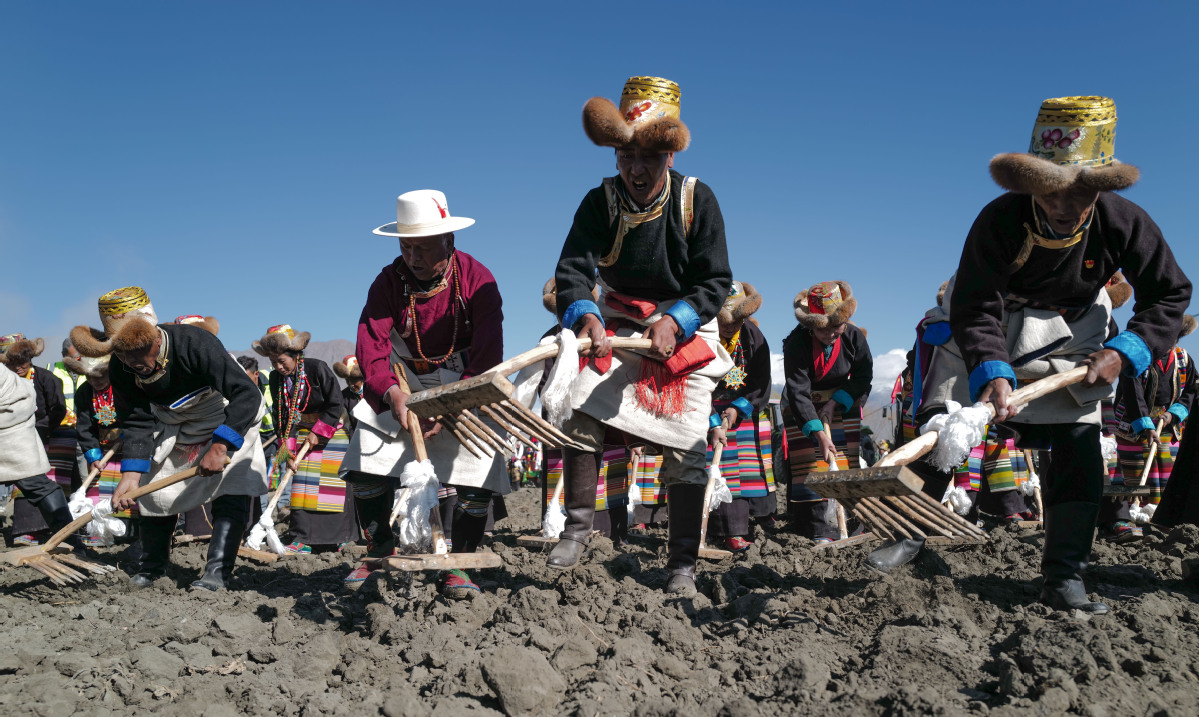Tibetan farmers mark plowing with festivities
By PALDEN NYIMA and DAQIONG in Lhasa | China Daily | Updated: 2021-03-18 09:07

Dressed in their newest and best, Tibetan farmers from many villages in the Tibet autonomous region participated in ancient spring rituals on Tuesday to mark the start of this year's plowing season.
Villagers gathered in the fields in the brisk air after sunrise for prayers, songs and traditional dances to express hope for a year of good harvests.
Starting on Tuesday, farmers in the cities of Shigatse, Lhokha and the regional capital Lhasa-scattered along the middle reaches of the Yarlung Zangbo River-started their annual spring plowing.
Unlike the farming practices of the past, in which people mainly used yaks and horses to pull the plows, many now use cultivating machines. The yaks were still present in a way, as cultivators in some villages were dressed up to look like the animals to commemorate their important traditional role.
Farmers also sent greetings to each other by presenting hada-white scarves representing purity and honesty-and sharing big bowls of barley wine. The fields were filled with laughter and cheers.
Tibet achieved a 65 percent agricultural mechanization rate during China's 13th Five-Year Plan (2016-20) period. Thanks to the machinery, the yaks can take a rest from their past labors in the region.
Dawa Tsering, a farmer in Drakarsho village in Dagze county, explained that residents thought the morning ceremonies would help bring a bumper harvest-or would at least do no harm. And the rituals provided a bonding moment for the farmers, who share the trials of raising crops in the difficult high-altitude environment of Tibet.
"Last year, our residents were provided with fine barley varieties by the government. Thanks to that, we saw an increment of 1.6 yuan ($0.25) on every kilogram. We are full of confidence about this year's harvest," he said.
"The farmers are not only planting their crops but are also planting hope."
The latest regional government report, delivered in January, said Tibet has seen stable increases in annual grain output, which has exceeded 1 million metric tons for five consecutive years.
The report said the total output value of the region's agricultural and livestock products hit 5.7 billion yuan during the country's 13th Five-Year Plan period, nearly double the figure from the previous five-year plan.
























